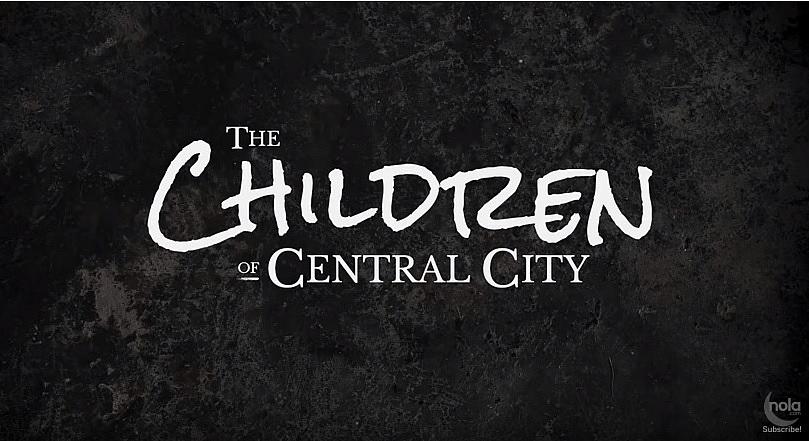The story behind 'The Children of Central City'
Produced as a project for the Dennis A. Hunt Fund for Health Journalism, a program of the USC Annenberg Center for Health Journalism.

The chaos and calm outside the yellow police tape at New Orleans crime scenes can become all-too-familiar: The way that small clusters of neighbors gather to discuss what happened, speaking in hushed tones to avoid being overheard by the arriving horde of reporters and TV cameras; or the way you can spot a car speeding down the street and know it's a grieving relative who is about to bolt under the tape in a desperate attempt to see the body - pleading for some miracle that will bring their loved one back.
Perhaps most jarring is the presence of children. We've seen them standing wide-eyed on their porches, counting evidence cones placed next to spent shell casings. We've watched them get off school buses and ask a police officer to escort them to their homes because it's inside the taped off area. We've listened as children barely old enough to speak in complete sentences describe how someone got shot right in front of them.
How does this exposure to violence affect these most innocent bystanders? What lasting damage does it cause? What is being done to help them, and is there more that should be done? Those are some of the questions a NOLA.com | The Times-Picayune team set out to answer in "The Children of Central City," a series launching Wednesday (June 13) online on NOLA.com and in print in The Times-Picayune. The series is the result of a months-long reporting effort.
We chose to focus on Central City in part because we, like so many media outlets limited by time and resources, have been guilty of parachuting in the neighborhood for a story and leaving after it's published. This, we were determined, would be different. Aided by a fellowship from the University of Southern California's Annenberg Center for Health Journalism, we rented office space at Apex Youth Center on Toledano Street and opened a temporary Central City bureau on the second floor of the former Holy Ghost School.
For weeks, we met with people in Central City. We listened more than we talked. What we heard were residents proud of their neighborhood, wary of being portrayed as hopeless, but concerned with the seemingly intractable violence and poverty that threaten to snuff out hard-earned progress.
Thanks in part to Wild Magnolias Indian Chief Bo Dollis Jr., we were eventually introduced to Edgarson Shawn Scott, head coach of the A.L. Davis Park Panthers youth football team. Talking with Scott and watching that first practice, we instinctively knew this team could be the backbone of our entire series.
Joined by photographer Brett Duke and videographer Emma Scott, we shadowed the team for months, conducting dozens of interviews. We got to know some of the players and their families, many of whom invited us into their homes.
We witnessed Paulette Young cry as her grandson Jerone recited a poem about the death of his mother, murdered seven years ago.
We heard the frustration in parents' voices as they talked about not wanting to keep their kids cooped up inside playing video games all day, but being afraid of what could happen just outside their front doors.
We saw people like Children's Bureau counselor Todd Cirillo or Crocker principal Nicole Boykins working tirelessly to save kids from being swallowed by the relentless trauma they face.
There were lighter moments, too. Like Panthers team member Thadeus Holmes, 9, running across the park yelling, "Mom, I need some hot chocolate!" after we suggested he could warm himself up with the drink following a chilly fall practice. And being acknowledged as "best team journalists" during the Panthers' end-of-season awards banquet, which we proudly hosted at Apex.
We hope this series will make you think differently about children in Central City and across New Orleans - and make us all question whether we're doing enough to help them build the future every child deserves.
New installments of "The Children of Central City" will run daily on NOLA.com Wednesday through Sunday, and in home-delivered editions of The Times-Picayune on Wednesday, Friday and Sunday. The schedule of stories is as follows:
- Wednesday: "The 28," how a football coach grapples with the deaths of 28 players; and "Science of Trauma," how exposure to violence can be toxic to the brain and body.
- Thursday: "In Desperate Need," how state budget cuts have undermined efforts to treat soaring rates of post-traumatic stress syndrome among Central City children; and how a crisis counselor fights to save a traumatized 7-year-old boy.
- Friday: "Students in Peril," why some New Orleans schools are failing to address trauma's devastating impact on education; and how a principal's turbulent childhood helps her shape her students' futures.
- Saturday: "A Family Team," how a Central City couple plans to save their neighborhood through football; and meet the 9- and 10-year-old members of the A.L. Davis Park Panthers.
- Sunday: "One in a Million," from prison to the classroom -- a former Panther's tale of trauma and redemption.


